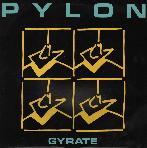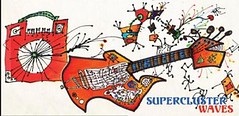Pat Ivers and Emily Armstrong continue sorting through their archives of punk-era concert footage as it’s digitized for the Downtown Collection at N.Y.U.’s Fales Library.
A few years ago, a woman took her 14-year-old daughter to a Sleater/Kinney concert. After the show, a band member approached the mom and breathlessly asked, “Are you Vanessa from Pylon? We love you!” Score one for the parental unit.
Pylon is the greatest group from the new wave scene that you probably never heard of. When Rolling Stone saluted R.E.M. as the best band in America in 1987, their drummer Bill Berry disagreed. “We’re not the best rock ‘n roll band in America.” He thought Pylon was.
In 1978, they were four art students from Athens, Georgia, a southern college town where bands like the B-52s were establishing a beachhead for alternative rock. Lead singer Vanessa Briscoe Hay recalls that their path to forming a band was “as unlikely as it seemed preordained.” Guitarist Randall Bewley and bass player Michael Lachowski began writing music and practicing in a studio. Their penchant for playing the same riff over and over earned the attention of their exasperated upstairs neighbor, Curtis Crowe, who finally knocked on their door and offered to be their drummer.
They needed a vocalist but their search for a male lead singer proved exhausting and fruitless. As a stop-gap measure, they would play an album, “How to Teach Your Parrot to Talk” and jam behind it, just so they could have some kind of vocal track. A cassette of those efforts were used by local heroes, the B-52s as a warmup for the crowd before they performed. When Vanessa heard it at a gig and told Michael how much she liked it, he asked her to audition as their singer. Although she had only sang in her high school choir, she agreed and quickly joined the band.
“My high school choir taught me a work ethic,” Vanessa remembers. ”Pylon taught me how to relax and have fun.” Their initial goal was just that: have fun, make it into NY Rocker (the influential punk/new wave weekly paper), play in New York City, and break up. They began appearing at local dance parties. The B-52s went to Pylon’s third show and immediately offered to help them get booked up north. They were soon opening for the Gang of Four in Boston, New York and Philadelphia.
Michael Shore, music critic at SoHo News, described what he saw: “All the Athens bands, they had a similar kind of vibe musically, with the thin guitar and killer drummers. Pylon took the Athens sound and were the hardest, the most musical, serious, brutal, and physical, they had real muscle. Pylon was very funky and dub oriented with their use of space, and that’s what funk is all about, it’s about the spaces between the beats and the way you syncopate the spaces. Pylon was genius with all that.” The video clip of their performance of “Danger” at Danceteria in August 1980 bears this out. Bring on the dub and the funk!
They released their first album, “Gyrate” on DB records in 1980 and landed on the cover of NY Rocker in 1981, just as they hoped. They toured for the next two years with groups like the Talking Heads and U2 but by 1983, with goals met and the fun running out, they broke up.
They reunited two more times, in 1989 and 2004. But when Randall Bewley died in 2009, that was the end of things. As Vanessa put it, “It was shocking and there was a long mourning period. When you are in a band like ours, it really is like your family.”
Vanessa continues to make music with Supercluster, a collective of Athens musicians creating what they call “Appalachian Wave.” You should check it out. And search out some old Pylon records. Indie never sounded so good.






